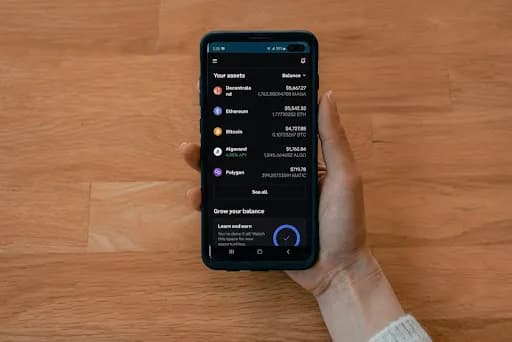Unveiling the Versatility of eSIM Technology

In the ever-evolving landscape of telecommunications, eSIM technology has emerged as a revolutionary solution, offering unparalleled flexibility and convenience for users across the globe. But what is eSIM, and how does it transform the way we connect? Let’s delve into the intricacies of eSIM technology and explore its myriad applications.
What is eSIM?
eSIM, short for embedded SIM, is a relatively new technology that replaces the traditional physical SIM card found in mobile devices with a programmable chip built directly into the device itself. Unlike conventional SIM cards, which are removable and can only be used with a single carrier, eSIMs allow users to switch between multiple carriers and data plans without the need for a physical swap. This flexibility enables users to easily connect to different networks while traveling internationally or to choose the most suitable plan based on their needs and preferences.
The Rise of eSIM Applications
With the advent of eSIM technology, a wide array of applications has emerged, catering to diverse user needs and scenarios. One such application is the SIM app, which serves as a centralized platform for managing eSIM profiles, activating new plans, and monitoring data usage. These apps streamline the eSIM activation process, making it easier than ever for users to take advantage of the benefits of eSIM technology.
Exploring the Best eSIM Providers
- eSIM Plus: Leading the pack as one of the best eSIM providers, eSIM Plus offers a comprehensive range of eSIM plans tailored to meet the needs of modern users. With competitive rates, extensive coverage, and user-friendly activation processes, eSIM Plus ensures a seamless and hassle-free experience for its customers.
- Airalo: Another top contender in the eSIM market, Airalo offers a diverse selection of eSIM plans designed for international travelers. With coverage in over 190 countries and regions, Airalo provides users with the flexibility to stay connected wherever their adventures take them.
- Truphone: Renowned for its global connectivity and reliability, Truphone offers eSIM solutions that cater to the needs of frequent travelers and international businesses alike. With eSIM plans available in over 100 countries, Truphone ensures seamless connectivity and superior network performance.
- Ubigi: With its user-friendly interface and extensive coverage, Ubigi is a popular choice among users seeking hassle-free eSIM solutions. Ubigi’s eSIM plans provide users with access to high-speed data, voice calling, and text messaging in over 190 countries and territories.
- Flexiroam: Rounding out the list of top eSIM providers is Flexiroam, known for its innovative eSIM solutions and flexible pricing options. With coverage in over 150 countries, Flexiroam offers users a convenient way to stay connected while on the go.

Advantages and Disadvantages of eSIM Technology
Advantages:
- Flexibility: One of the primary advantages of eSIM technology is its unparalleled flexibility. Unlike traditional SIM cards, which are tied to a single carrier, eSIMs allow users to switch between multiple carriers and data plans seamlessly. This flexibility enables users to choose the most suitable plan based on their needs and preferences, whether they’re traveling internationally or looking for the best local coverage.
- Convenience: eSIMs eliminate the need for physical SIM cards, making the activation and management process much more convenient for users. With eSIMs, there’s no need to visit a store or wait for a physical card to arrive in the mail. Instead, users can activate their eSIMs remotely and instantly access mobile connectivity, saving time and hassle.
- Space-saving: Another advantage of eSIM technology is its space-saving design. By integrating the SIM card directly into the device’s hardware, eSIMs free up valuable space within the device, allowing for sleeker and more compact designs. This is especially beneficial for manufacturers looking to create thinner and lighter devices without sacrificing functionality.
Disadvantages:
- Limited Compatibility: While eSIM technology is gaining traction, not all devices and carriers support eSIMs. This limited compatibility can be a barrier for users who want to take advantage of eSIM technology but are restricted by their device or carrier options. Additionally, some older devices may not support eSIMs at all, requiring users to upgrade to a newer device to access this technology.
- Dependence on Digital Infrastructure: eSIMs rely on digital infrastructure for activation and management, which can pose challenges in areas with limited connectivity or technological resources. Users may encounter difficulties activating their eSIMs or accessing customer support in regions with poor digital infrastructure, impacting the reliability and accessibility of eSIM technology.
- Security Concerns: Like any digital technology, eSIMs are susceptible to security threats and vulnerabilities. Users must be cautious when purchasing and activating eSIMs to ensure the security of their personal information and data. Additionally, eSIMs are vulnerable to cyber attacks, such as SIM swapping, which can compromise the user’s mobile connectivity and data privacy.
Overall, while eSIM technology offers numerous advantages in terms of flexibility, convenience, and space-saving, it’s essential for users to consider the limitations and potential security risks associated with this technology. By weighing the pros and cons carefully, users can make informed decisions about whether eSIM technology is the right choice for their mobile connectivity needs.
As eSIM technology continues to gain traction in the telecommunications industry, its applications are poised to revolutionize the way we connect and communicate. With a growing number of eSIM providers offering competitive plans and seamless user experiences, the future of connectivity looks brighter than ever. Whether you’re a frequent traveler, a digital nomad, or a business professional, eSIM technology offers unparalleled flexibility and convenience, ensuring that you stay connected wherever life takes you.
Source: Glusea
You Might Also Like

How to Invest in Bitcoin and Make Money
Bitcoin is a type of cryptocurrency that uses blockchain technology to enable peer-to-peer financial transactions without the need for a central authority like a bank or government. Bitcoin was introduced in the year 2008 by a developer called Satoshi Nakamoto. Since its inception, Bitcoin has become the world’s largest and most popular cryptocurrency . This […]

Kuami Eugene Net Worth 2025
Kuami Eugene, born Eugene Kwame Marfo on February 1, 1997, is one of Ghana’s most influential High-life and Afrobeat artists. Known for his soulful voice, energetic performances, and chart-topping hits like “Angela,” “Wish Me Well,” and “Ohemaa,” he has become a household name in Ghana and across Africa. As of 2025, Kuami Eugene’s net worth […]

Top 7 Side Hustles You Can Start with No Money in 2025
Are you looking for ways to earn extra income without spending a dime? Whether you’re a student, employee, or entrepreneur, 2025 is full of opportunities to start a side hustle with zero capital. Thanks to the internet and digital tools, starting a profitable venture is more accessible than ever. In this article, we’ll explore 7 […]

Floki Inu Launches AI-Powered USDT Staking Platform with Up to 20% Returns
If you’re a crypto enthusiast looking to build your wealth stress-free, Floki Inu Staking has launched an AI-based platform allowing you to stake USDT and earn up to 20%* annually. The platform is getting attention in the decentralized finance (DeFi) space for making passive income easy, secure, and accessible to everyone. Stablecoins are pegged to […]









